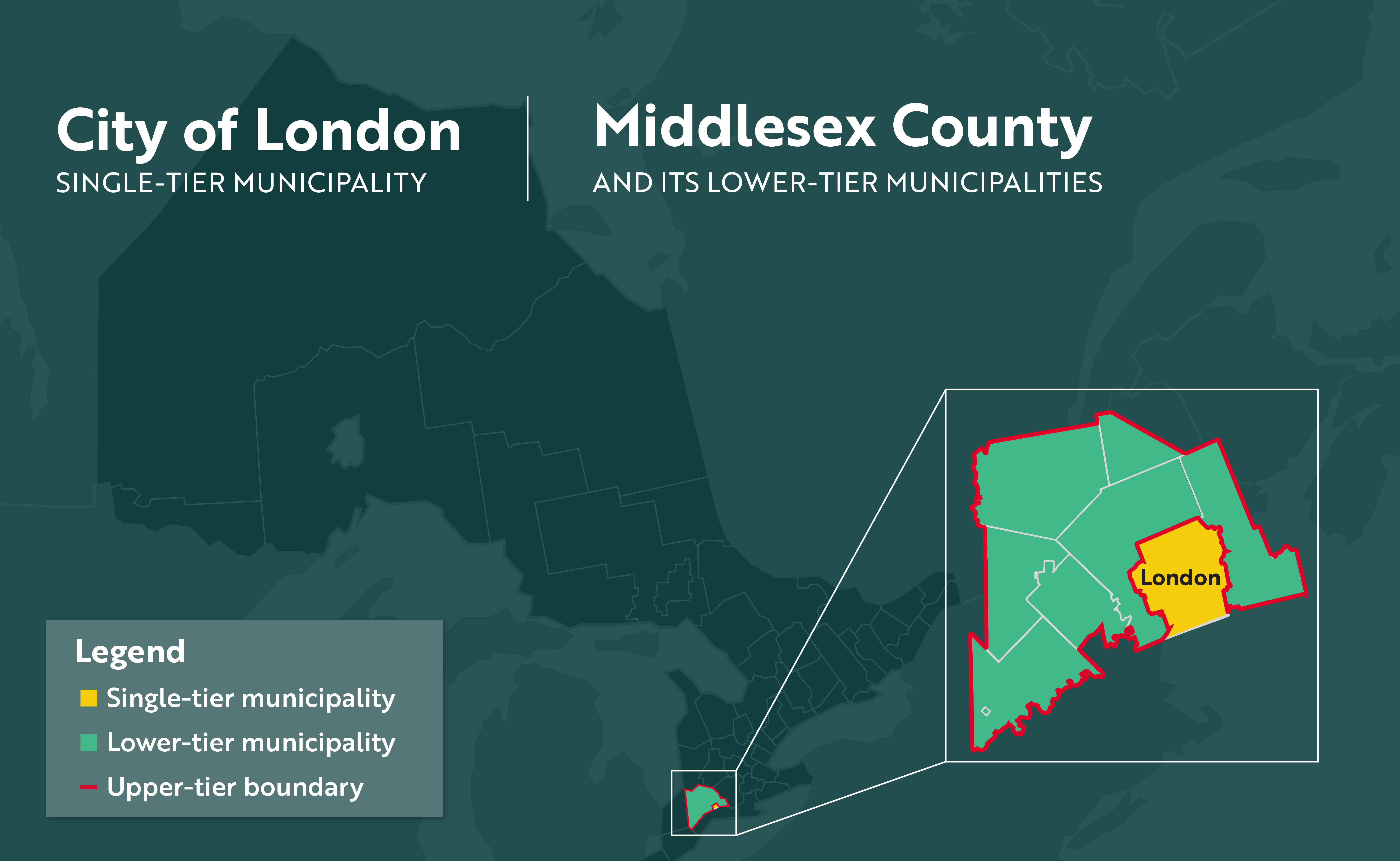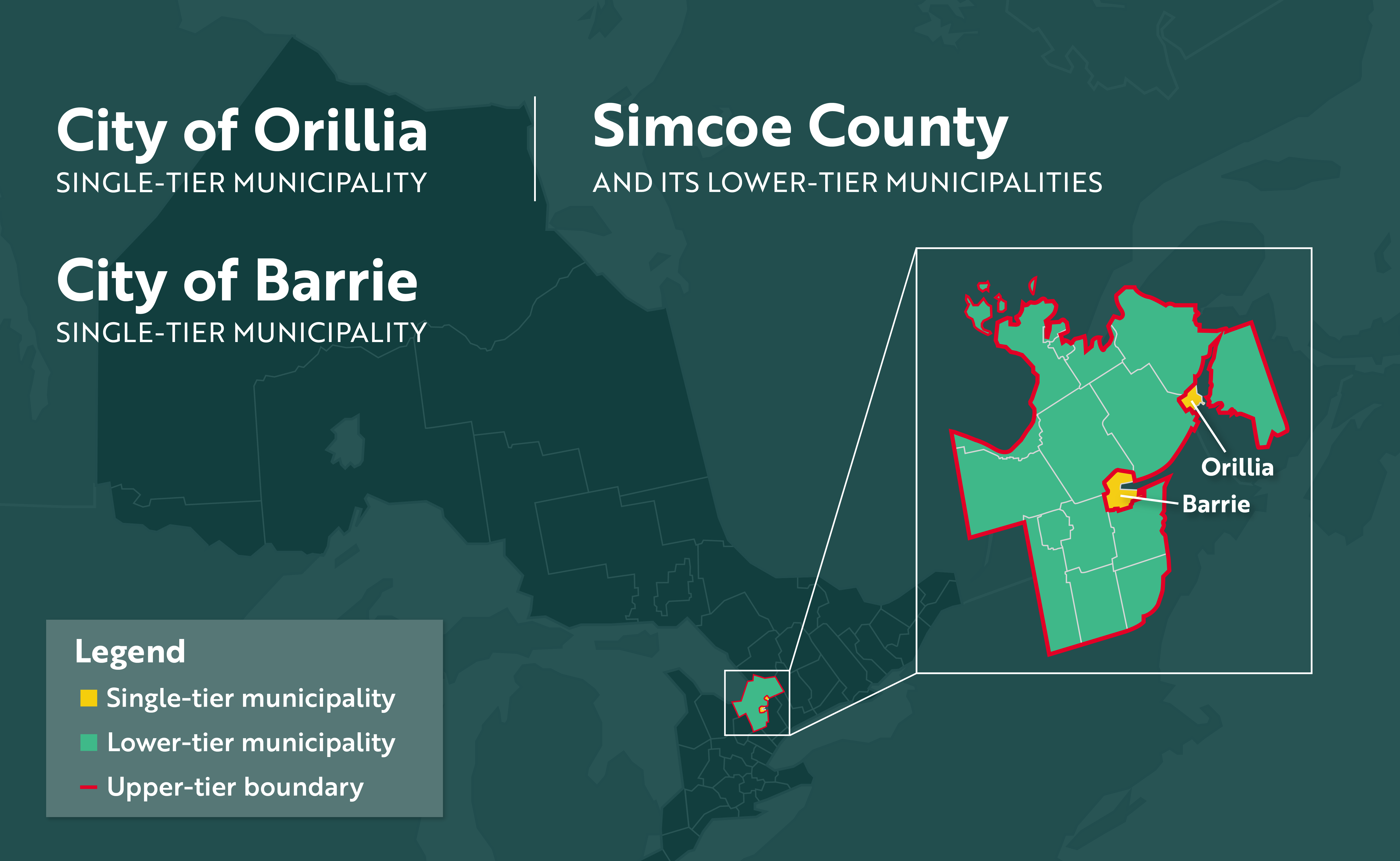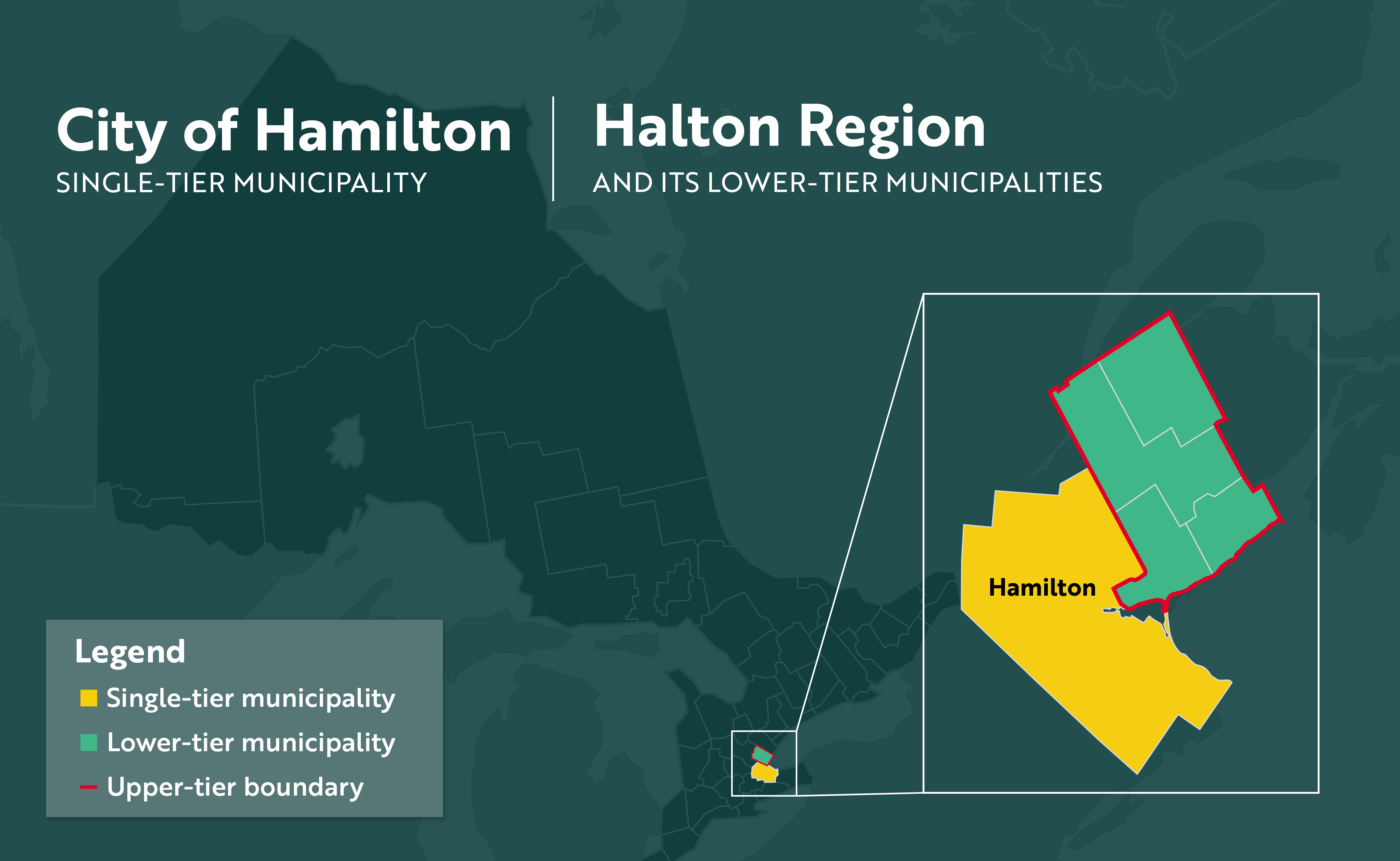Municipal Structures
| Municipal 101 | Municipal Structures | Municipal Elections | Key Municipal Roles | Ontario Municipalities |
Knowing how Ontario's unique municipal structures work is important because it helps to create accountability for service to run on time, to figure out who to call about damaged infrastructure systems, and to find opportunities to participate in local activities.
How are Ontario municipalities structured?
A municipality is an incorporated geographic area within a province such as a town, city, village, county, or region. In Ontario, municipalities can be either single-tier, upper-tier, or lower-tier. In some areas, upper-tier and lower-tier municipalities work together to provide services for communities; in others, single-tier municipalities are responsible for all local services within that area.
Lower-tier
Lower-tier municipalities provide localized services within their community. These services are usually the ones that require an approach that accounts for the specific needs of an area such as: maintenance of local roads, fire services, libraries, recreation programming, and land-use planning.
Upper-tier
Upper-tier municipalities provide services for larger geographic areas. These services are usually those that are more cost-effective to provide for larger populations or across larger areas such as: maintenance of arterial roads, water and wastewater systems, and health and social services.
Upper-tier municipalities are a federation of the lower-tiers. They do not manage lower-tiers, but their councils have representation from the lower-tier municipalities in their area.
Single-tier
Single-tier municipalities are responsible for all municipal services in their area, except those provided by a Service System Manager.
Service System Managers
Ontario is the only jurisdiction in Canada where municipal levels of government hold responsibility for social services. In Ontario, the delivery of some social services is planned, managed and co-funded by Service System Managers. Their areas of responsibility include income support (Ontario Works), childcare, homelessness prevention, community housing.
There are 47 Service System Managers across the province, including 37 Consolidated Municipal Service Managers (CMSMs) in Southern Ontario, and 10 District Social Service Administration Boards (DSSABs) in Northern Ontario. Service System Managers provide services in geographic areas typically corresponding with single- or upper-tier municipalities.
The maps below illustrate the different ways in which lower-, upper-, and single-tier municipalities can fit together geographically. Depending on location, size, and other factors, CMSMs sometimes service multiple nearby upper- and single-tier municipalities in Southern Ontario. For example, the City of London acts as the CMSM for itself and all of Middlesex County, Simcoe County acts as the CMSM for itself and the cities of Orillia and Barrie, but the City of Hamilton and Halton Region each act as separate CMSMs.



Northern Ontario
In Northern Ontario, all municipalities are single-tier, but there are some “unincorporated” areas that are not part of a municipality. Unincorporated areas are sparsely populated, and services are administered by the province and District Social Service Administration Boards (DSSABs).

| Municipal 101 | Municipal Structures | Municipal Elections | Key Municipal Roles | Ontario Municipalities |
